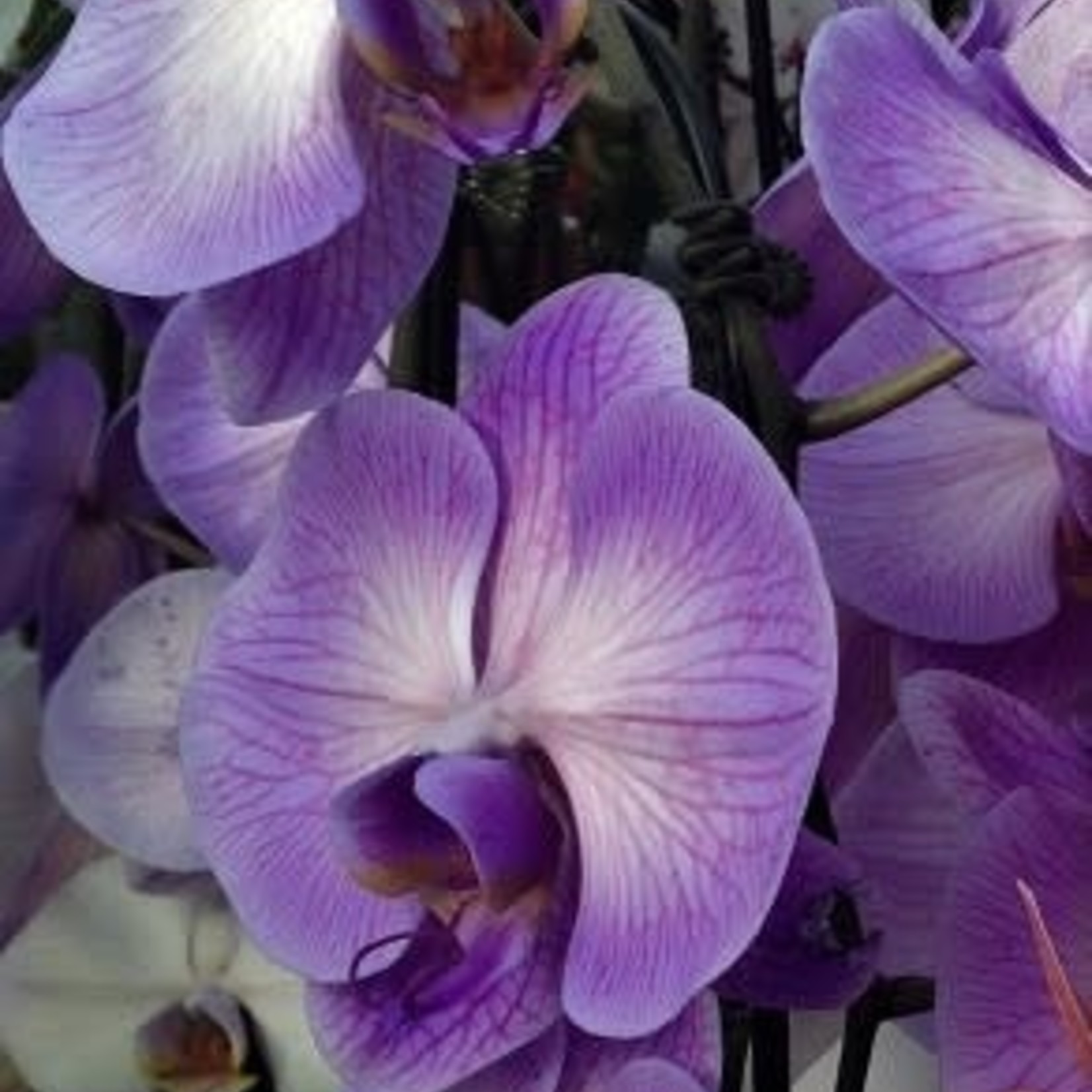
Orchid Moth dyed-Purple
Details
Common Name: Moth Orchid (Purple dyed)
Latin Name: Phalaenopsis
Light: Indirect or filered sun, Bright light
Special Features: Long blooming, Pet friendly
Description:
Phalaenopsis comes from the Ancient Greek word phalaina, which means “a kind of moth,” hence the nickname “moth orchid.” These dyed orchids are created by injecting pigment into the stem, but different growers may use different methods and varying color concentrations. When these dyed orchids rebloom, the new blooms will be the color of the original plant. If you have a white orchid that has been dyed purple, the new blooms will be white. Moth orchids typically bloom for two to four months. The flowering time depends on how well it is cared for. Orchids can rebloom 1-2 times per year.
Phalaenopsis comes from the Ancient Greek word phalaina, which means “a kind of moth,” hence the nickname “moth orchid.” The colours are numerous and you can expect to find them in white, yellow, pink, fuschia, purple, and spotted and striped, and typically bloom for two to four months. The flowering time depends on how well it is cared for. Orchids can rebloom 1-2 times per year
The Phalaenopsis orchid or Moth Orchid is the most popular variety you will see at garden centres. It is a genus of orchids that contains about 70 different species. This particular orchid species is native to India, China, Southeast Asia, New Guinea, Australia, the Philippines, and Indonesia. Most are epiphytic meaning they grow on trees.
If your Orchid is planted in bark, you will probably have to water it about once every seven days. If the bark is bone dry, soak the pot for about 10 minutes, allowing the water to really get into the bark as well as the roots. If it is planted in moss it will not need watering as often. Allow the moss to dry completely before watering. Another method is to use ice cubes to melt over the surface. Many have great success with this method. Just don’t place the ice cubes directly on a root. When repotting, it is best to use the same potting mix. Orchid potting soil contains bits of bark and not much soil, and sphagnum moss or orchid moss is the alternative.
In their native habitat, Moth orchids tend to grow close to rivers and streams in warmer, more humid climates. An easy way to achieve a more humid environment in most homes is to keep a water pan close to your orchid. The water will consistently evaporate to keep the area more humid. Placing your orchid on a pebble tray filled with water helps as well.
Orchids do not like periods of direct sun. A couple of hours of early morning sun is fine, but a bright area or filtered sun is ideal.




